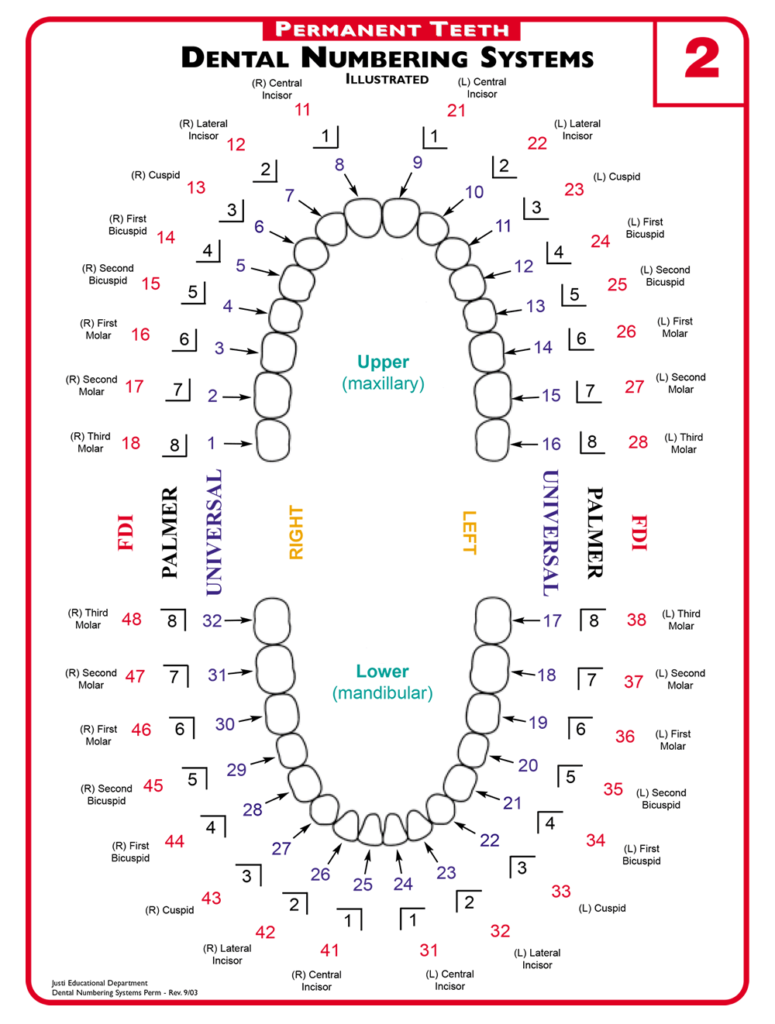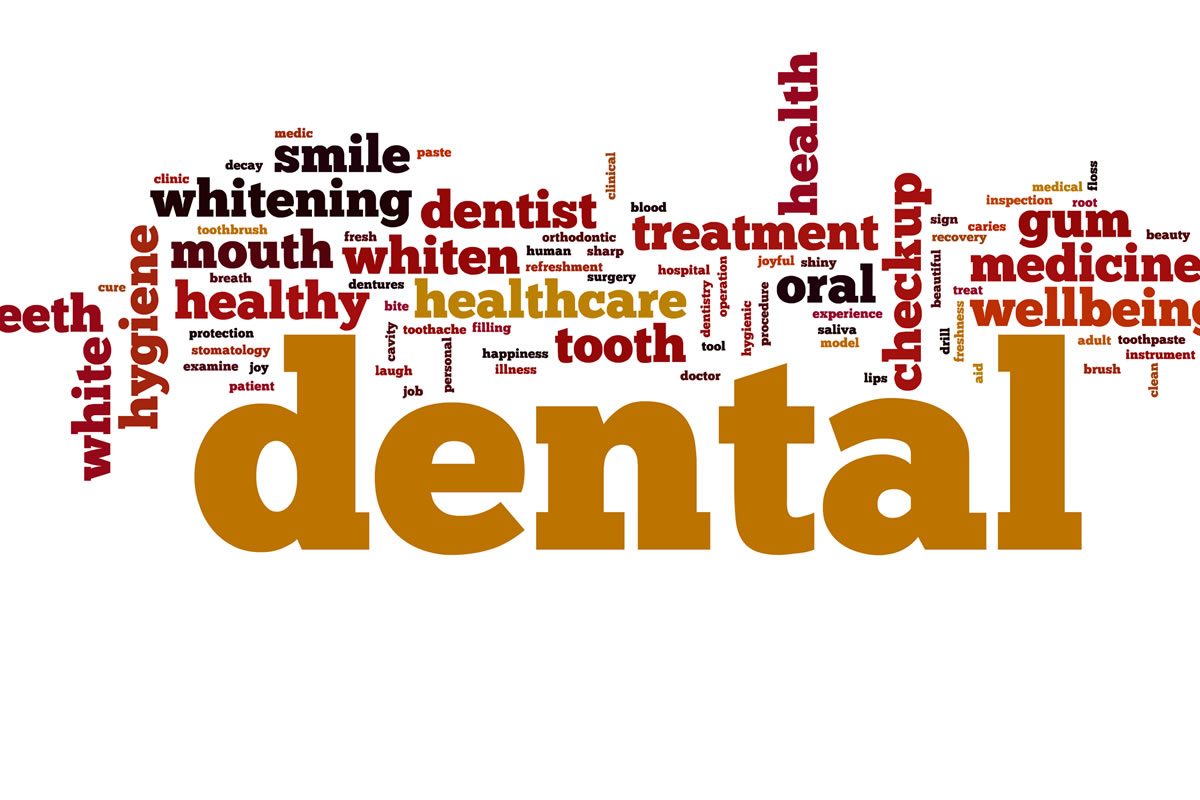When you sit in the chair at your dentist’s office, do you ever feel confused? Do you hear the dentist and staff talking, but don’t understand what they’re saying? Dental terminology is almost its own language, with lots of unique terms and numbers tossed around by the professionals. You want to understand what they’re saying about your teeth, right? Here’s a guide to understanding dental lingo, especially what the numbers discussed mean.
Quadrants
When you’re sitting in the dentist’s chair, the last thing you expect is to hear the word quadrant. When the dental staff use this term, they’re not talking about equations or formulas. It’s an expression about the parts of your mouth.
Dentists split the interior of your mouth into four sections or quadrants. The upper portions of your mouth are the first two quadrants, while the lower portions are the third and fourth ones. So, the top right of your mouth’s interior is quadrant one (that’s your right side), while your top left is quadrant two.
The bottom is a bit more confusing. Whereas the upper part numbers the right side first, it’s the opposite for the bottom. The bottom left is quadrant three, and the bottom right is quadrant four. From the dentist’s perspective, they look into your mouth up and down. It’s easiest to list the quadrants such that the section under quadrant two is quadrant three.
You can imagine it this way. The dentist is reading your quadrants like a clock starting from the dentist’s top-left (quadrant 1) and going clockwise through quadrants 2, 3, and 4.
Numbering Your Gums
Gum disease is one of the most frequent issues that dentists see. They’ve developed shorthand terminology to define the health of your gums. One of the measurements they’ll use to gauge your gums is the gap between the pocket of your gum and the nearby tooth. Each of your teeth will receive a number for its gum gap.
Dentists measure this distance in millimeters. As a patient, you want to hear a smaller number. That means that you have a smaller gap between the tooth and gum, a sign of a healthy mouth. A larger number indicates that you have gum issues such as plaque and tartar buildup.
When your distance says that your gums are 1 to 3 millimeters in diameter, what they’re really saying is that you have healthy gums. It’s a sign that you brush and floss regularly, generally taking great care of your teeth.
A larger number is worrisome. Patients with this sort of gap between teeth and gums have likely gone a while between dental cleanings. Inflammation naturally occurs in such situations. It’s even possible that the dentist may warn you that you’re in the early signs of periodontal disease or possibly bone loss. They’ll probably do a check to see whether your gums bleed easily.
A gum number of five millimeters or higher is a problem. Your dentist will almost certainly tell you to get a deep cleaning. The hope is that the cleaning will remove the buildup between the tooth and gum. Other potential causes are a cracked tooth or gum loss. In extreme situations, someone with this level of buildup will need corrective surgery, although dentist will usually prefer to try lesser treatments first.
Numbering Your Teeth
Dentists have a chart that uses numbers to help them make notations of healthy and problem teeth. If you listen to your dentist, you’ll learn a great deal about the current state of your dental hygiene. In Canada, we use the ISO/FDI system developed by the World Health Organization. In other countries, such as the US, dentists use another system known as the Universal System, or in the UK where dentists use the Palmer Notation Method.
The ISO/FDI system used in Canada

The first thing to realize is dentists use a two-digit numbering system. So the upper right teeth begin with the number “1” (i.e. 11), the upper left teeth begin with the number “2” (i.e. 21), the lower left teeth begin with the number “3” (i.e. 31), and the lower right teeth begin with the number “4” (i.e. 41). You may not have all of these teeth. For example, tooth 48 is a wisdom tooth, one that dentists oftentimes extract to improve the overall health of your mouth.
The upper half of your mouth has lower numbers. These are teeth 11-17, and 21-27 on the dental chart. The numbering system has a second purpose, though. It also identifies which type of tooth is under discussion.
Since the counting system begins in the middle of the upper quadrant on the right side, the first two teeth are incisors. They are numbers 11 and 12 on the chart. The next tooth is a canine, which is number 13. The premolar teeth are 14 and 15 and the molars are 15-18.
When your dentist calls out numbers, the incisors are the most confusing to understand. That’s because four of them rest on the top and bottom layers of teeth. They also reside in all four quadrants. The upper right quadrant’s incisors are 11 and 12. The upper left quadrant’s incisors are 21 and 22. Your canine teeth are 13 and 23. Your premolars are numbered as 14, 15, 24, 25 and your molars are 16-18 and 26-28.
The same is true on the bottom. The counting starts in the lower left quadrant, where the incisors are 31, 32, 41 and 42. The canines are 33 and 43 and the premolars are 34, 35, 44 and 45. Then, the molars are 36-38 and 46-48.
Using this information, dentists can quickly notate which teeth have issues that need correction. As an example, a chip in the second molar in quadrant four would show as tooth 47 on the chart. Wisdom teeth are the 8th tooth in each quadrant, so they’re numbers 18, 28, 38, and 48 respectively.
Now that you understand the dental numbering system, you should pay attention during your visits. You can learn a lot about the current state of your teeth!





 December is finally here, and if you’re not already hyped about the holidays, you’re about to […]
December is finally here, and if you’re not already hyped about the holidays, you’re about to […]
